Share
Explore
Maximize Your Healthcare Marketing with Primary Care Physicians Email Lists
Introduction to Healthcare Lead Generation
Navigating the competitive healthcare market requires precise and effective marketing tactics. As a hospital, pharmaceutical company, or healthcare service provider, reaching the right professionals can lead to substantial gains. Leveraging a can significantly enhance your marketing efforts. This method ensures that your messages reach the decision-makers who influence patient care and purchasing decisions. With the right email list, your campaigns can be more targeted, leading to improved communication and better returns on your marketing investments.
Understanding Segmentation
Segmentation is the process of dividing your audience into distinct groups based on various criteria, such as specialty, location, or practice size. This strategy allows marketers to create tailored messages that resonate with each segment. By understanding and implementing segmentation, healthcare marketers can significantly improve engagement. When emails are tailored to address the specific needs and interests of different physician groups, they are more likely to be opened, read, and acted upon, ultimately driving better results.
Building a Primary Care Physicians Email List
Developing a robust is crucial for your marketing strategy. Start by sourcing data from reliable channels such as healthcare directories, medical associations, and industry conferences. Ensuring data accuracy is vital; outdated or incorrect information can lead to ineffective campaigns. Always comply with regulations like the CAN-SPAM Act and GDPR to maintain trust and avoid legal pitfalls. Regular maintenance of your email list, including frequent updates and verification of email addresses, is essential. This proactive approach minimizes the risk of bounced emails and enhances the overall success of your targeted marketing efforts.
Effective Strategies for Segmented Campaigns
Tailoring messages for distinct physician groups requires a deep understanding of their unique needs and challenges. Personalize emails based on factors such as location, practice size, and specialty. For example, urban primary care physicians may respond better to content focusing on cutting-edge technology, while rural practitioners might value information on resource optimization. Employ personalization techniques like using the recipient's name and incorporating relevant practice information to create a more engaging experience.
Additionally, ensure your email content is visually appealing and easy to read, with clear calls to action that direct the recipient on what to do next. Incorporate testimonials or case studies relevant to the specific group you are targeting, as these can add credibility and relatability. Using segmented lists allows you to send highly relevant information that resonates with each group, increasing the likelihood of engagement and action.
Maximizing Response Rates
To enhance response rates, timing your emails strategically can make a significant impact. Sending emails when physicians are likely to check their inbox, such as mid-week mornings, often yields better results. Crafting compelling subject lines is crucial; they should be concise, relevant, and intriguing enough to prompt the recipient to open the email. Once the email is opened, the content should immediately capture attention and provide clear value. Use concise, informative text with engaging visuals to maintain interest.
Personalization is another key factor. Addressing the recipient by name and tailoring the content to their specific interests or practice details can create a more engaging experience. Including clear calls to action is essential, directing recipients on what steps to take next. For example, prompting them to download a whitepaper, schedule a meeting, or explore a case study can guide their actions effectively.
Additionally, segmenting your email list to tailor content further enhances relevance. By focusing on specific groups, such as urban versus rural practitioners, you can address their unique needs and preferences. Monitoring and adjusting the frequency of your emails based on engagement data ensures that your audience isn't overwhelmed, maintaining their interest and increasing the likelihood of positive responses.
Measuring Success
Tracking the effectiveness of your campaigns is crucial for understanding what works and what doesn't. Focus on key performance indicators such as open rates, click-through rates, and conversion rates. These metrics offer valuable insights into your audience's engagement with your content. Utilize analytics tools to regularly review this data, enabling you to make informed adjustments to your strategy.
For example, if you notice that emails sent on specific days have higher open rates, you can optimize your send schedule accordingly. Similarly, pay attention to the types of content that garner the most clicks and conversions. This information can guide you in creating more of what resonates with your audience.
Another important aspect is A/B testing. By experimenting with different subject lines, email designs, and calls to action, you can identify what elements drive better results. Continuous testing and iteration are key to refining your approach and maximizing effectiveness.
Additionally, monitor the performance of segmented campaigns. Different segments may respond uniquely to various types of content and timing. Adjust your strategies based on the engagement data from each segment to ensure you are meeting their specific needs.
Regularly updating and cleaning your will also contribute to more accurate metrics, as it reduces the chances of bounced emails and keeps your list relevant.
Conclusion
By leveraging segmentation, you can create more personalized and effective marketing campaigns targeting primary care physicians. Tailoring your messages to specific groups based on criteria like location, practice size, and specialty ensures higher engagement and response rates. Utilize reliable data sources to build a robust email list, and regularly maintain and update it for accuracy. Crafting relevant and compelling content that addresses the unique needs of each segment will foster stronger connections and drive better results. Employ strategic timing and captivating subject lines to enhance open rates. Measure your campaign's success through key performance indicators and adjust your strategies based on these insights. By implementing these best practices, your healthcare marketing efforts will be more targeted and impactful.
Want to print your doc?
This is not the way.
This is not the way.

Try clicking the ⋯ next to your doc name or using a keyboard shortcut (
CtrlP
) instead.